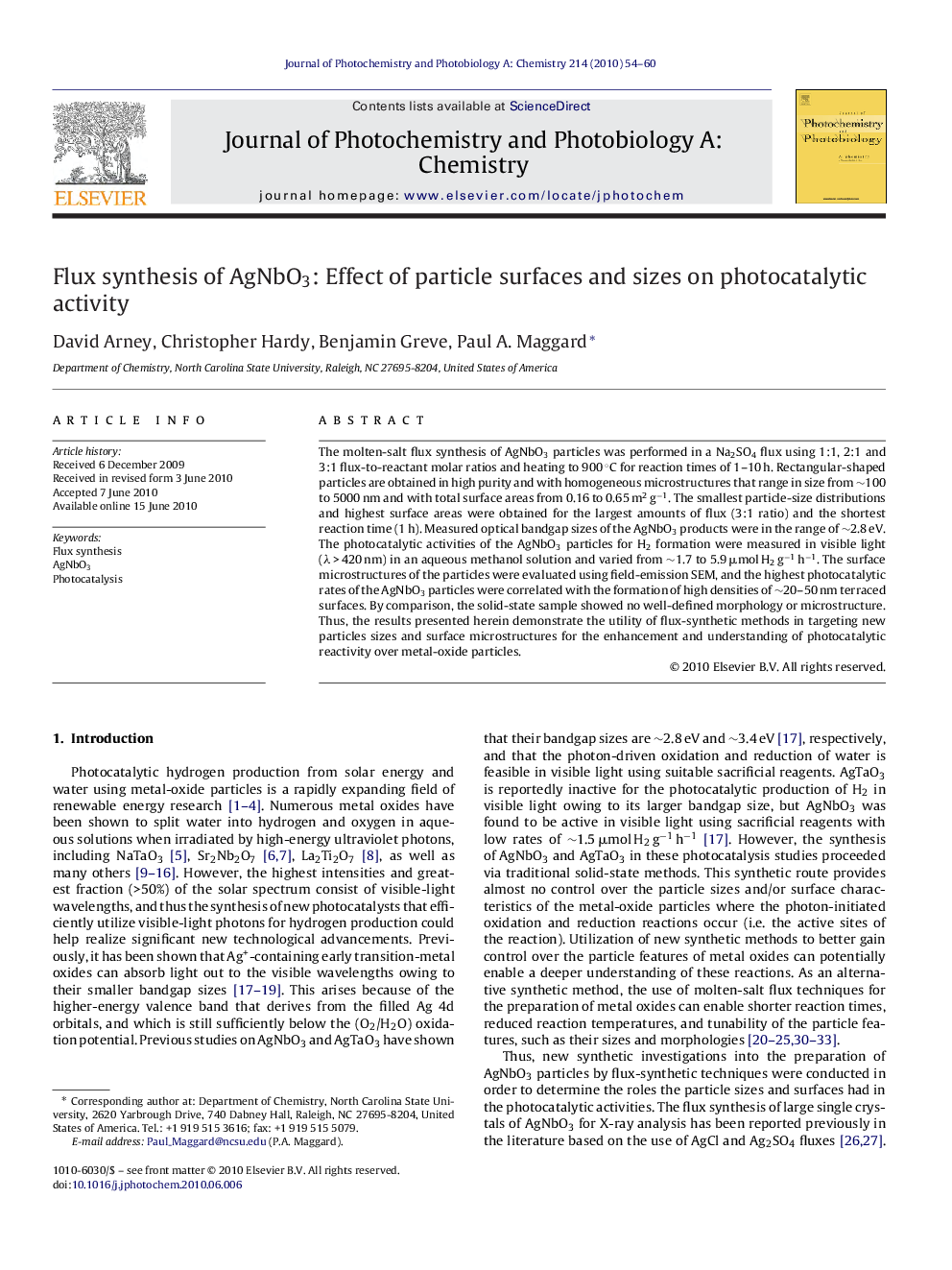| Article ID | Journal | Published Year | Pages | File Type |
|---|---|---|---|---|
| 27519 | Journal of Photochemistry and Photobiology A: Chemistry | 2010 | 7 Pages |
The molten-salt flux synthesis of AgNbO3 particles was performed in a Na2SO4 flux using 1:1, 2:1 and 3:1 flux-to-reactant molar ratios and heating to 900 °C for reaction times of 1–10 h. Rectangular-shaped particles are obtained in high purity and with homogeneous microstructures that range in size from ∼100 to 5000 nm and with total surface areas from 0.16 to 0.65 m2 g−1. The smallest particle-size distributions and highest surface areas were obtained for the largest amounts of flux (3:1 ratio) and the shortest reaction time (1 h). Measured optical bandgap sizes of the AgNbO3 products were in the range of ∼2.8 eV. The photocatalytic activities of the AgNbO3 particles for H2 formation were measured in visible light (λ > 420 nm) in an aqueous methanol solution and varied from ∼1.7 to 5.9 μmol H2 g−1 h−1. The surface microstructures of the particles were evaluated using field-emission SEM, and the highest photocatalytic rates of the AgNbO3 particles were correlated with the formation of high densities of ∼20–50 nm terraced surfaces. By comparison, the solid-state sample showed no well-defined morphology or microstructure. Thus, the results presented herein demonstrate the utility of flux-synthetic methods in targeting new particles sizes and surface microstructures for the enhancement and understanding of photocatalytic reactivity over metal-oxide particles.
